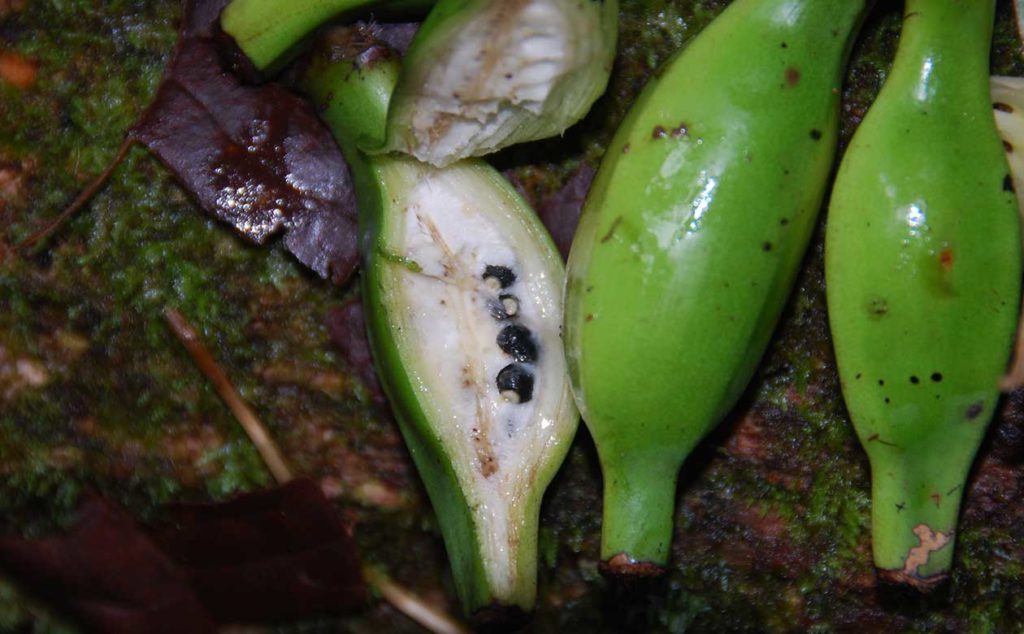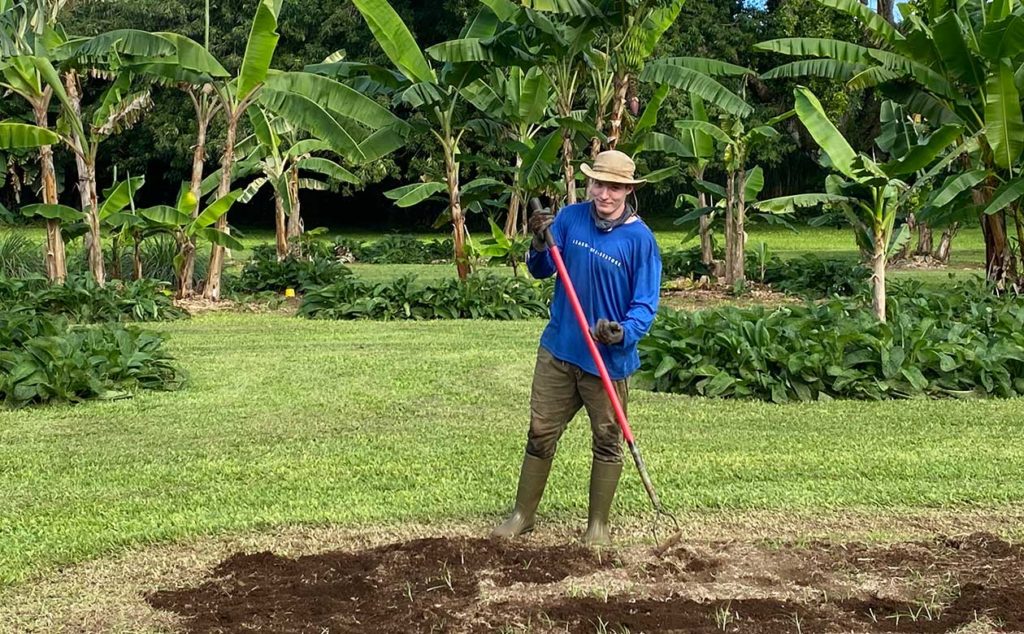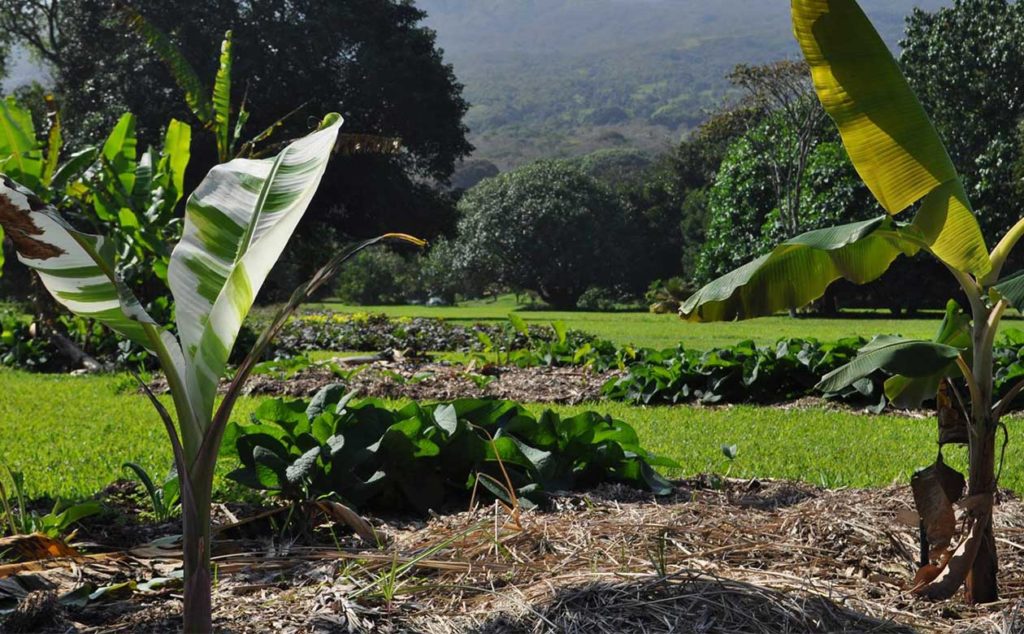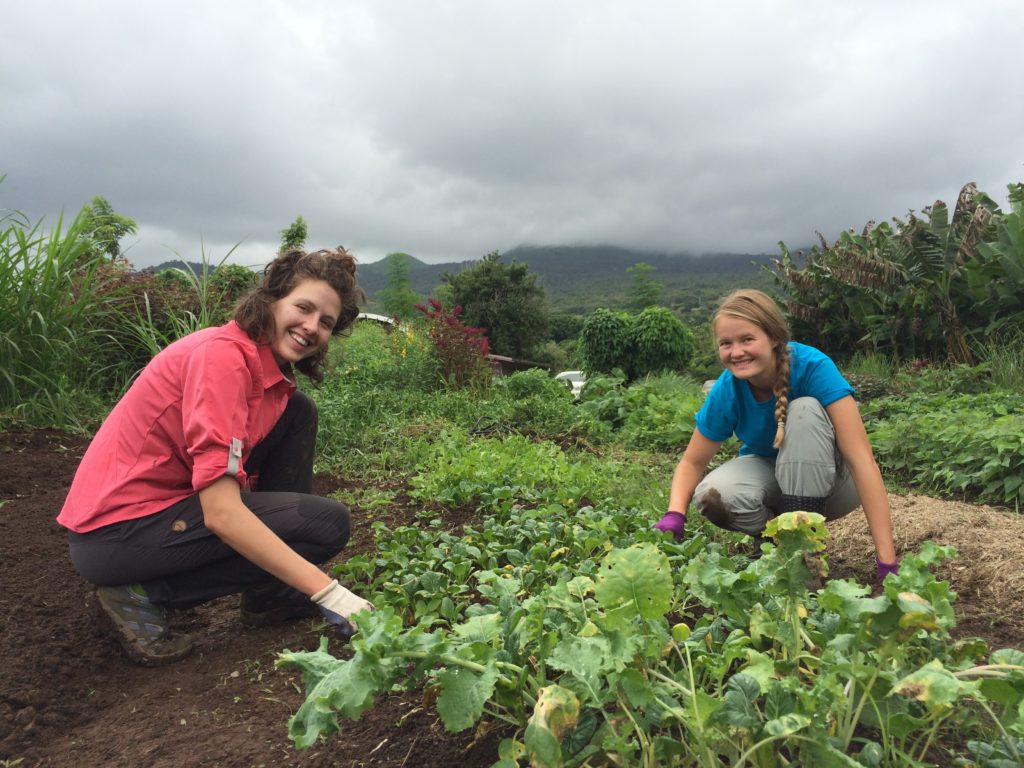The world’s most popular tropical fruit is one of the most susceptible to disease. NTBG’s Kahanu Garden maintains a collection of rare bananas that is a safeguard preserving plant diversity of this important tropical food crop and your breakfast. With your help, NTBG is stemming the tide of plant loss and food insecurity. When you donate to the National Tropical Botanical Garden, you’re a part of this critical work that keeps our plants and our planet healthy.
It is a story that is all too common in 2020. A mysterious disease quietly spreads far and wide before its life-threatening symptoms appear. By the time the disease is identified, it’s impossible to stop and takes a heavy toll. While familiar, this story is not about the present COVID-19 pandemic but rather a fungus wreaking havoc on banana crops worldwide and threatening the existence of the most widely consumed Cavendish variety.
If you ate a banana today, chances are you were able to easily acquire it from a local supermarket or cafe. It probably looks and tastes just like every other banana you have ever purchased, and you could find one just like it from nearly any grocer or roadside fruit stand on the planet. This is because monoculture crops of Cavendish bananas account for 47% of global banana production and 99% of bananas cultivated for commercial export.

Monoculture is a form of agriculture focused on growing one type of crop at a time. In the case of Cavendish bananas, not only are they the primary variety cultivated for commercial consumption and trade, the crops are genetically identical. This means that every Cavendish banana you have eaten is a clone of one that came before it. While monoculture does offer the benefit of efficiency and scale, it also increases the risk of disease and crop vulnerability. In other words, if a disease affects one plant, it can affect them all. Banana farmers and barons of the early 20th century are no stranger to the vulnerabilities of banana monoculture. Until the mid 20th century, the Gros Michel variety of banana was the most popular, commercially available variety. Still, fungus all but wiped it out in the 1950s, replaced by today’s heartier, or so thought, Cavendish variety.
Tropical Race 4 (TR4), also known as Fusarium Wilt or Panama Disease, is a soil-borne fungus that enters banana plants from the root, blocks water flow throughout the plant, and causes it to wilt. At present, TR4 cannot be controlled with fungicide or fumigation and has been found in banana-growing regions across Asia, Africa, Australia and was discovered in South America, where most commercial bananas are produced in 2019.

Bananas are the world’s most popular tropical fruit. In fact, the average American consumes more than 26 pounds of banana every year. While not exactly a staple of the American diet, bananas are one of the most economically important food crops worldwide and responsible for an annual trade industry of more than $4 billion, only 15% of which is exported to the United States, Europe, and Japan. What is particularly devastating about the fungus’ potential to overrun our most popular variety is that most bananas are consumed by people in developing countries where affordable food sources and nutrient-rich calories can be hard to come by. With a great demand for bananas and monoculture crops highly susceptible to TR4 and other fungi, scientists are racing the clock to develop new disease-resistant bananas, but looking to history is likely where the answer lies.
Long before westerners arrived in Hawaii, ancient Polynesians voyaged to the islands in double-hulled sailing canoes. To sustain life throughout their journey, and once they reached their destination, they brought a selection of at least two dozen species of plants for food, clothing, structure, medicinal and cultural purposes. These plants are commonly referred to as “canoe plants,” and even though they were introduced to the island, they are an essential part of Hawaii’s cultural history.

Banana or maiʻa in Hawaiian are canoe plants introduced and planted in some of the most idyllic and enchanting places throughout the islands. One ancient story described a banana patch so large you could get lost trying to find your way around it growing deep in Maui’s Waihoi Valley. The story caught the attention of naturalist Dr. Angela Kay Kepler in 2004, and a botanical adventure ensued. Determined to find the legendary banana field, Dr. Kepler hired a helicopter to survey the valley. Sure enough, growing along the Waiohonu River banks, was the largest wild-growing traditional Hawaiian Banana Patch.
“The number of early varieties is a fraction of what it once was, and research to verify each is ongoing. Kahanu Garden serves as a haven where they can be preserved and shared for future generations.”
Mike Opgenorth, Kahanu Garden Director
After making this discovery, Dr. Kepler phoned Kamaui Aiona, former director of NTBG’s Kahanu Garden and Preserve, managing a small collection of banana varieties. The two returned to the wild patch, collected a pair of young specimens, and returned them to the garden collection where they are still growing. Today, Kahanu’s maia collection exceeds 30 varieties and is one of the most diverse in the State of Hawaii.

“In recognition of the threat of losing indigenous crop diversity, NTBG recently adopted a strategic goal to collect and curate all extant cultivars of Hawaiian canoe plants,” said Mike Opgenorth, current Director at Kahanu Garden. “The number of early varieties is a fraction of what it once was, and research to verify each is ongoing. Kahanu Garden serves as a haven where they can be preserved and shared for future generations.” he continued.
Today, Kahanu Garden is carrying on the critical work of protecting banana diversity and Hawaii’s botanical heritage and re-introducing these important varieties to local food systems. “Existing commercial varieties do not exhibit the resiliency to combat these new diseases,” said Opgenorth. “It is so important that other banana varieties remain available so that we can defend irreplaceable genetic diversity that will help feed the world,” he finished.
Feeding the world starts at home for NTBG and Kahanu Garden. Together with partners at Mahele Farm, the organizations are working together to provide for the isolated Hana Maui community and share the traditional plant knowledge of Hawaii’s kupuna (elders).

“Over the past ten years, weʻve launched ourselves into the Hawaiian-style study of maia,” said Mikala Minn, Volunteer Coordinator at Mahele Farm. “As small farmers dedicated to feeding our community, the crop variety was a perfect fit for our weekly food distributions. As we shared the fruit and learned the best ways to prepare each type, stories from our kupuna came to light. This personʻs papa would put them in the imu, half-ripe. Another kupuna grew up eating them boiled and mashed. Others made poʻe, a kind of maiʻa poi.,” he continued. Mahele Farm distributes approximately 50 pounds of fresh produce to kupuna at the Hana Farmers market every week and helps maintain a small collection of Hawaiian bananas at the Hana Elementary school.
“This personʻs papa would put them in the imu, half-ripe. Another Kupuna grew up eating them boiled and mashed. Others made poʻe, a kind of maiʻa poi.”
Mikala Minn, Volunteer Coordinator at Mahele Farm
Today’s agricultural and botanical problems are complex, but looking to the past, protecting plant diversity, and encouraging local farmers, schools, and even home gardeners to diversify is an excellent and effective step in the right direction.
NTBG is a nonprofit organization dedicated to saving and studying tropical plants. With five gardens, preserves and research centers based in Hawaii and Florida, NTBG cares for and protects the largest assemblage of Hawaiian plants. Join the fight to save endangered plant species and preserve plant diversity today by supporting the Healthy plants, healthy planet campaign.